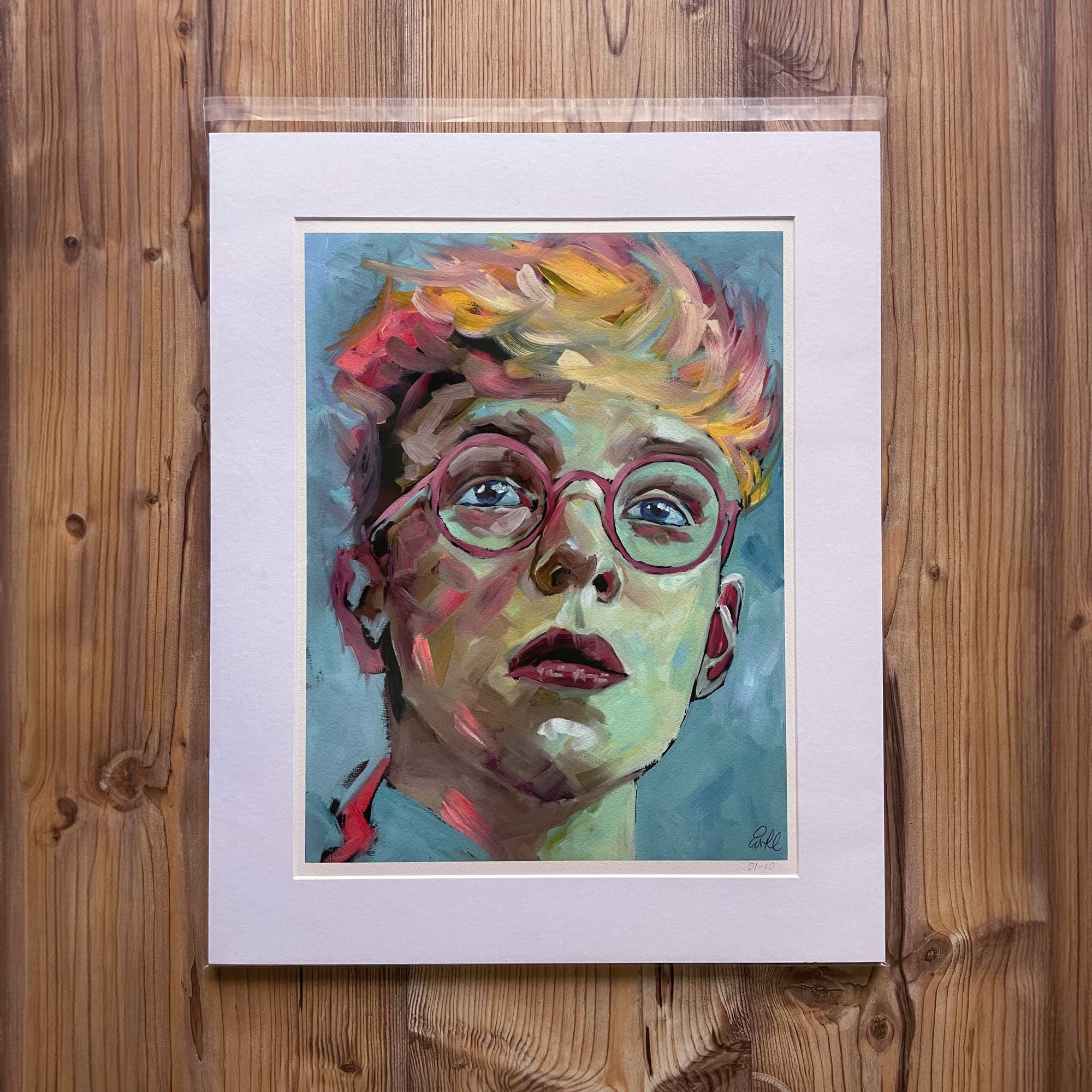Boy in Red Glasses (2024): The First Brushstroke Back
This article is the first in a series where I look back at the paintings I made after losing my mum.
I will be sharing these reflections here on my blog, Notes from the Studio, to explore how grief and wonder shaped this body of work.
The Moment Before the Brush
In April 2024, I found myself standing on the threshold of something I wasn’t sure I could do again. Just two days earlier, it had been a year since my mum passed away, a year that turned my life upside down. For most of that time, I simply hadn’t had the emotional capacity to paint. Grief had left me feeling devastated, unable to function in the way I once did.
But on that spring morning, sunlight poured in through the double doors of my front room, and for the first time in a long time, I felt excited. I was ready to pick up a brush. Ready to see what would happen when I did.
I think it’s important to be honest about that moment. It wasn’t some grand, heroic decision. It was just a quiet readiness, a feeling that maybe, just maybe, I had enough strength to try again.
The Act of Painting
When I paint, it feels like entering a different dimension. I love the smell: the linseed oil, the turps lingering in the air. It’s terrible in a way, but intoxicating too. There’s something about that smell that tells me I’m home.
I set up my heavyweight Fabriano paper on the table, the same kind I’d used the year before. I love how the paint sits on it, vibrant but soft, and practical to store when you’re making a lot of work.
The reference image was a boy in red glasses, chosen not because I knew him but because something about his expression drew me in. At the time, I wasn’t thinking about any theme called Wonder. I was just pulled toward the curiosity in his face, the delicacy of the pose. I wanted to paint something that felt intriguing and alive.
My process is never formulaic. I don’t work in neat steps from darks to lights. Instead, I jump: highlights, mid-tones, back to shadows, then to highlights again. It’s an instinctive way of working that probably comes from my ADHD. My palette is always laid out the same way, like a compass of colour I can navigate by feel: whites to yellows to reds, blues to greens to earth tones.
The painting unfolded like a conversation. Sometimes it felt like we were arguing; sometimes it was effortless. There were moments of frustration when the brushstrokes weren’t working. Moments when the colours harmonised so perfectly it felt like breathing. It was, in every sense, a relationship, a push and pull of feeling, attention, and energy.
And yes, it was self-soothing. Not because it was simple, but because it was real.
The Meaning Today
Looking back now, I can see things I couldn’t see then. At the time, I didn’t realise how much I needed something that was purely mine, something enjoyable, bright, and expressive after a year spent surviving.
I didn’t know this would become the first piece of what I’d later call The Wonder Series. But it was. It was the opening chapter, the moment I allowed myself to feel again. The palette, softer and more pastel than anything I’d made before, reflected that tentative re-entry into colour and emotion.
Since then, I’ve painted seven works in this series. As the months went by, the colours grew more vibrant, the brushwork more energetic. I could feel myself getting stronger, like an athlete finding their stride.
This painting taught me that it’s okay to start again slowly. That sometimes the only way to process something as vast as grief is to stand in front of a blank surface and see what emerges.
If Boy in Red Glasses had a voice, it would whisper a gentle tune, reminding me that feeling and expression are the same thing.
That’s why I want people to know this was my first painting after bereavement. Because honesty matters to me. Because it was the first step back into myself.
See Boy In Red Glasses: https://www.emma-woolley.co.uk/work/boy-in-the-red-glasses
Boy in red glasses (2024)
Oil on heavy duty oil paper
Portrait studies 2024
A1 59.4 x 84.1 cm
Interested in this piece?
The original Boy in red glasses is now beautifully framed in a St Ives floating frame and available to purchase - contact me for enquiries.
Giclée prints (Printed on Hahnemuhle german etching 310gsm and available at 12”x16”) are also available in my shop take a look!








